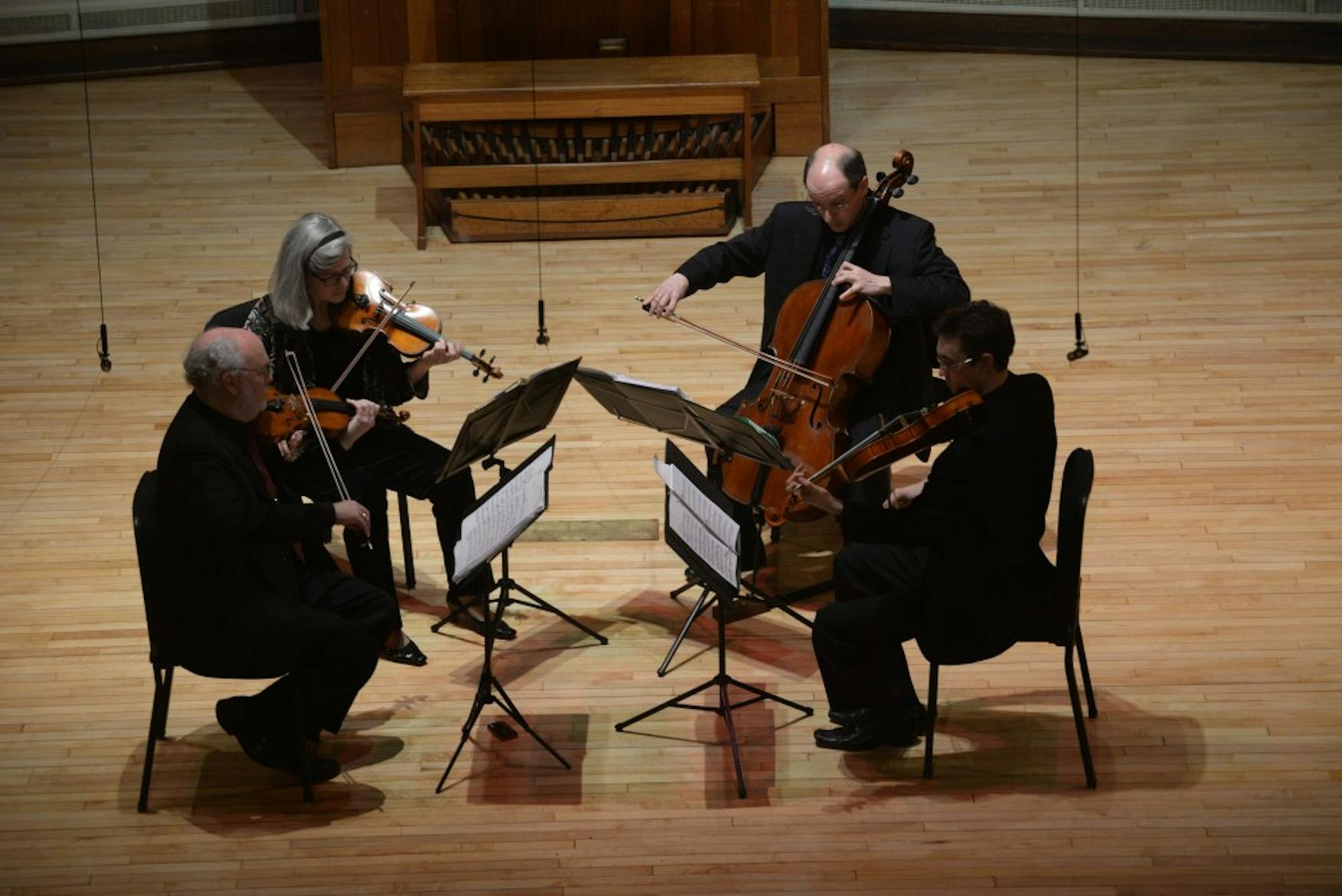Lydians perform first concert of season
The Lydian String Quartet, one of Brandeis’ musical treasures, kicked off its season and introduced its newest member, violist Prof. Mark Berger Ph.D. ’12 (MUS), with a concert on Saturday night “It’s About Time! (Part 1).”
The concert was preceded by a talk by Berger in which he discussed the pieces about to be played.
Berger spoke about how the Quartet chose the pieces and discussed the themes that tied all the pieces together—dreams and time.
The first quartet by Joseph Haydn—“String Quartet in F, Op. 50, N. 5 “The Dream” (1797)—obviously fit into theme of the dream very well. Berger spoke about the dreamy sounds in the second movement, “‘The Dream.’ Poco adagio” and how the slow, melodic movement, as he said, simply “sounds dreamy.” Other than the obvious relevance of the Haydn quartet to the themes of the program, Berger said that he “couldn’t ask for a better way to start the season,” as Haydn is sometimes referred to as the father of the string quartet.
Berger then discussed the two other string quartets on the program—20th-century works—and spoke about how they related to the theme of dreams in less obvious ways. “String Quartet No. 1” (1951) by Elliot Carter, for example, focuses peripherally on the theme of dreams through its interest in aspects of time. Berger talked about how Carter’s piece plays with chronological time as well as dream time—a form of time that is less objective. He talked about how the complexity of time in the piece relates to the plurality of modern life. “We can often be feeling many things all at the same time,” he said, noting that in the piece, there are “four completely different types of music going on at once.”
After the talk, concertgoers started pouring in—by the time the concert started, there were just a few seats in the house that were unfilled. The Lydian String Quartet—composed of first violinist Prof. Daniel Stepner (MUS), second violinist, Prof. Judith Eissenberg (MUS), violist Berger and cellist Prof. Joshua Gordon (MUS)—started the concert off with the Haydn.
A beautiful, soft and simple opening filled the room, a melody that then quickly deviated into a faster tempo with harsher sounds. The violinists’ top melodies were especially strong and fast as the Quartet fluctuated between fast and slow, loud and soft.
“The Dream” movement, as Berger had stated in his pre-concert talk, delivered slow melodies that drifted from the instruments that sounded as if they were floating. Melodies came slowly to a halt as others picked up again. The movement ended with a slow and simple stop that was not abrupt—much like the feeling of waking up peacefully from a dream.
Philip Glass’s quartet, “String Quartet No. 5” (1991) deviated severely in form from Haydn’s quartet. The five movements, the first four of which were titled, “-” and the fifth had no title, were played without pause. The piece was intense and had a sullen, creepy sound. In the latter movements—although they were not differentiated—the quartet played somber, melodic tunes, and the cello played on the lower register as the violins rose above it to reach higher notes.
The final quartet by Carter was chaotic. The piece again dismantled the form of having separate movements within the quartet. There were only two pauses in the four “large sections,” as the program calls them—both in the middle of a section.
The comments Berger made about the piece in his talk—specifically its relationship to the chaos of modern life—became very relevant when listening to the piece. The chaos in the music was apparent as each part clashed with the others, creating a messy combination of different noises—nothing seemed to fit together.
The note from the composer in the program says that the last section, “Variations,” “consists of a series of different themes repeated faster and faster at each successive recurrence, some reaching at their speed vanishing point sooner than others.” Indeed, it was somewhat anxiety-provoking to hear the various themes being repeated faster and faster still, until I wasn’t quite sure that the violinists could hold the speed—but they inevitably held the tempo. The piece ended with a melody from Stepner on the very upper register of the E string, ending with a harmonic that was almost too high to hear.
The second installation of the series, “It’s About Time! (Part 2),” will be performed on April 18.



Please note All comments are eligible for publication in The Justice.